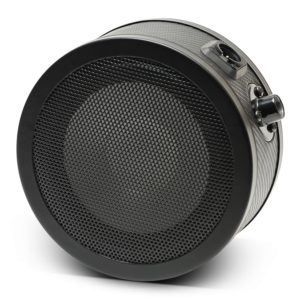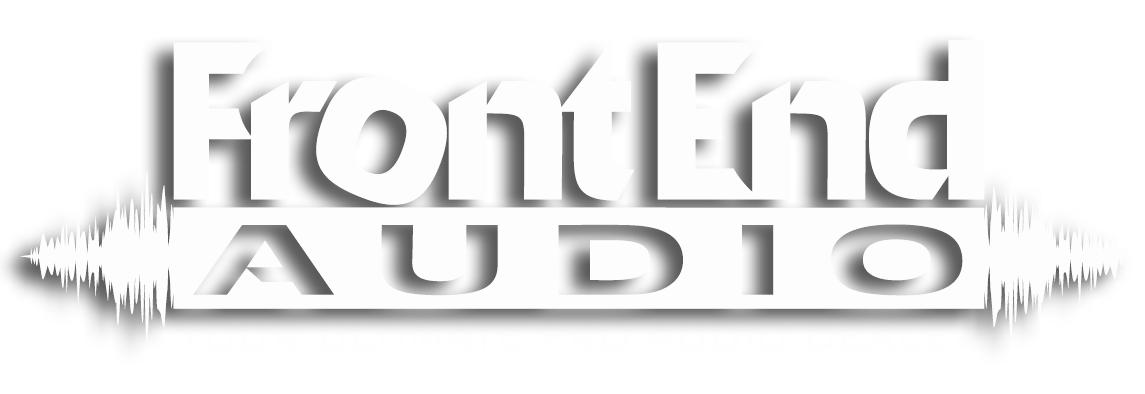What’s the deal with airplane food, and Sub Mics?
By Front End Audio on Mar 5th 2017

Obviously, no one is interested in talking about airplane food. So disregard the terrible Seinfeld joke, and let's move on to Sub Mics. What is a Sub Mic? Well, it is pretty much a speaker turned into a microphone and used for recording low register frequencies. This makes them perfect for kick drums (what they are most commonly used for), and bass cab. Of course you can always follow my philosophy of: “there are no rules, experiment with everything”; and try a sub mic on anything. Worst case is you don't like the results. Sounds simple right? It's not. You can't just wire an old woofer from any speaker and have a sub mic. Trust me, I've tried. Don't get me wrong, it'll work – but will sound like something Reika left on the floor.
If you are not aware, speakers run on the same principle as microphones (at least more directly dynamic mics). They just do things in reverse. A speaker converts electricity into air movement, creating sound. A microphone converts air movement into electricity, “capturing sound”. A basic concept. Wire things a little differently, and a speaker becomes a microphone. However, the quality of the speaker, how it is turned into a microphone, and the enclosure it is mounted in – all matter. The Shure SM57 and SM58 utilize the exact same diaphragm, but are not the same. It's in the design of the mics that make them sound different. Same principle applies here. When you have people (like the fine folks over at Solomon) who understand design, and have invested the time in R&D into a product (like their Solomon LoFreq), you yield proper results. Think of the difference between a generic drill, and a DeWalt. Not saying you'd have to buy a DeWalt, but you'd at least want a similar level quality – right?
So what makes sub mics cool? It's in what they do, and how well they do it. For example, the Solomon LoFreq utilizes a 6.5” driver, with a bi-directional polar pattern, and a response of 25Hz-3,000Hz. This is tailored to capturing the foundation of a low frequency instrument. While we almost always get a mic inside a kick drum to capture that attack so it can cut through a mix, we tend to lose that depth – the body of that drum. What do we always do? Double up – put a mic on the outside of the kick as well. Of course we find ourselves having to eq the heck out of it to get rid of all the upper mids and top that we don't need. That is where a sub mic comes into play. It's meant to capture all that depth, meat, body of a kick drum – without all the stuff you'd eq out anyway. Being that that is it's purpose, and the surface area of the large driver reacts properly to the energy of those low frequencies, it's not only more efficient, but more accurate. You are able to capture that big dimensional picture of all those beautiful big wave forms. Maybe if you are playing death metal at 200+ BPM, you aren't in need of a lot of low end in your kick (more so being focused on that cut/attack - and probably some sample replacing anyway), but that foundation matters in virtually all other genres (and a good bit of us metal guys like that bass).
Now you have your favorite mic inside the kick, and you have the attack of the kick sounding just right for you mix. Add a sub mic, and you can now blend in that tailored depth to fill out the sound of the kick – and all without additive EQ'ing. I mean, if you only had so much 80Hz to begin with, what are you really adding when you boost it another 5dB +? Sorry, I'm a subtractive EQ'ing guy. The point is that you are now having two mics doing the work of one mic, but doing different things to work together and get a more accurate image of the sound source. Plus, you are able to adjust those two mics independently, so what you do to the inside mic does not directly effect the sub mic. The captured sound becomes much more accurate. If we are to understand that dynamic mics and speakers function on the same principle, ask yourself if you want a tweeter handling the entire frequency range of a speaker. Maybe adding a woofer would make that speaker sound better. Maybe having a mic that is handling everything from 800Hz up, and another handling everything below 800Hz would yield better results. Kick drums and bass guitars are unique in that regard. 80Hz is just as important as 3kHz(ish) in a kick. One mic can only do so much.






 Sign Up for exclusive sales and offers!
Sign Up for exclusive sales and offers!